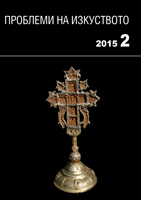Поглед към творческата лаборатория на художниците Михаил и Евтихий (за цикъла на Успение Богородично)
An insight into the creative laboratory of painters Michael and Eutychios (on the Assumption cycle)
Author(s): Maria KolushevaSubject(s): Christian Theology and Religion, History, Fine Arts / Performing Arts, Cultural history, History of Church(es), Visual Arts, Modern Age, Theology and Religion, 17th Century, Eastern Orthodoxy
Published by: Институт за изследване на изкуствата, Българска академия на науките
Summary/Abstract: The availability of a rare cycle of the Assumption scenes in the post-Byzantine painting at the Church of St George in Veliko Turnovo (1616) made us look at the root of its visualisation. The extant pictorial cycles both form West Europe and the Orthodox Christendom, show that until the late eighteenth century the representation of the subject has still been in a process of formation and any established iconographic tradition is out of the question. The things changed when the workshop of painters Michael and Eutychios Astrapas from Thessalonica took to the visualisation of the Assumption. In the late thirteenth and the early fourteenth centuries they were commissioned to decorate several monuments in the territory of what are now Macedonia, Serbia and Kosovo. The approach of the masters to the subject was creative and innovative. Working on various mural ensembles, they succeeded in inventing new compositions, introducing and establishing a number of iconographic elements in the traditional depicting of the Assumption. The next generation of painters followed closely and at times, more freely the model preset by the painters. With the fall of the Balkans to the Ottomans the tradition of representation of the cycle of the Assumption began to wane, but never faded away.
Journal: Проблеми на изкуството
- Issue Year: 2015
- Issue No: 2
- Page Range: 21-25
- Page Count: 5
- Language: Bulgarian
- Content File-PDF

